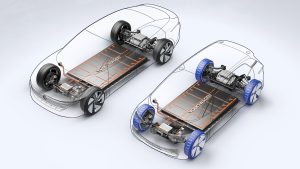Comparing Automotive Electrical Systems: An In-depth Look
The evolution of automotive technology has been nothing short of remarkable. From the earliest automobiles with basic electrical systems to today’s advanced setups, the electrical systems in cars have come a long way. Understanding the differences and advancements can help us appreciate the complexity and efficiency of modern vehicles.
The Basics: Traditional Automotive Electrical Systems
Direct Current (DC) Systems
Historically, most automotive electrical systems used direct current (DC). Batteries in these systems provide power through a circuit that flows in one direction. While effective, DC systems have limitations, including voltage drop over long distances, which can affect performance.
Alternating Current (AC) Systems
Some older vehicles used alternating current (AC) systems for specific applications, such as certain types of lighting. However, AC systems are less common in modern vehicles due to the complexities involved in converting AC to DC for most automotive applications.
Modern Automotive Electrical Systems: The Shift to Alternators
Alternators vs. Generators

The introduction of alternators marked a significant shift in automotive electrical systems. Unlike generators, which produce DC, alternators generate AC, which is then converted to DC using diodes. This conversion process is more efficient and reliable than traditional generator systems.
Benefits of Alternators
Alternators offer several advantages over generators, including higher output at lower engine speeds, improved efficiency, and longer lifespan. These benefits have made alternators the standard in modern vehicles, powering everything from headlights and radios to complex computer systems.
Advanced Electrical Systems: The Rise of Integrated Electronics
Electronic Control Units (ECUs)
Modern vehicles are equipped with multiple Electronic Control Units (ECUs) that manage various functions, including engine performance, emissions control, and safety systems. These ECUs rely on a sophisticated network of sensors and actuators to monitor and adjust vehicle operations in real-time.
Advanced Battery Technologies
Lithium-ion and other advanced battery technologies have revolutionized automotive electrical systems. These batteries offer higher energy density, faster charging times, and longer cycle life compared to traditional lead-acid batteries. As electric and hybrid vehicles become more prevalent, these advancements will play a crucial role in shaping the future of automotive electrical systems.
The Future of Automotive Electrical Systems
Electrification and Connectivity

As the automotive industry continues to evolve, electrification and connectivity are driving significant changes in electrical systems. Electric vehicles (EVs) and hybrid vehicles require more robust and efficient electrical architectures to support their advanced propulsion systems and onboard electronics.
Integration of Autonomous Technologies
The rise of autonomous vehicles introduces new challenges and opportunities for automotive electrical systems. Advanced sensors, radar, and camera systems require precise and reliable electrical connections to enable autonomous driving capabilities. As these technologies mature, we can expect further advancements in automotive electrical systems to support the next generation of self-driving cars. For gates head auto electrics services see here.
Conclusion
The journey from basic DC systems to today’s advanced automotive electrical architectures showcases the relentless innovation and adaptability of the automotive industry. As vehicles become more complex and interconnected, the role of electrical systems will continue to grow in importance, shaping the future of transportation.
Understanding these systems’ evolution and capabilities is essential for drivers, mechanics, and enthusiasts alike. Whether you’re driving a classic car with a traditional electrical system or a modern vehicle packed with advanced electronics, appreciating the engineering behind these systems adds another layer of fascination to the driving experience.


